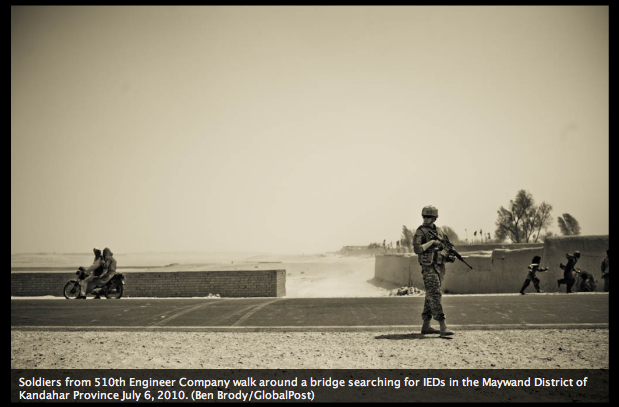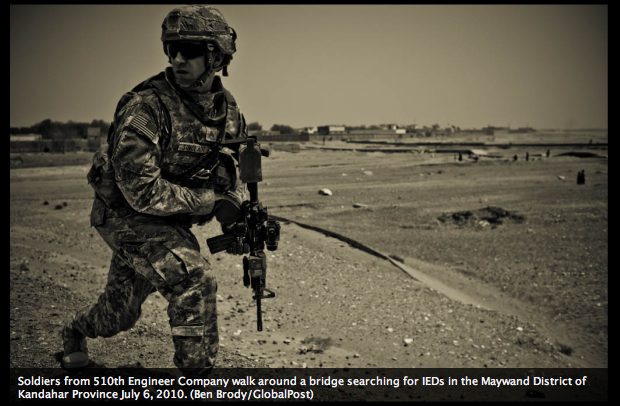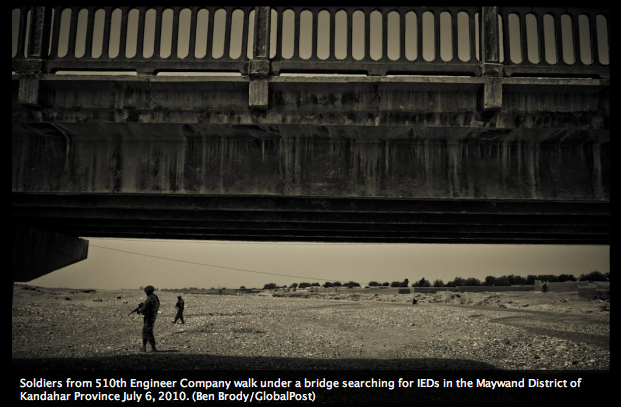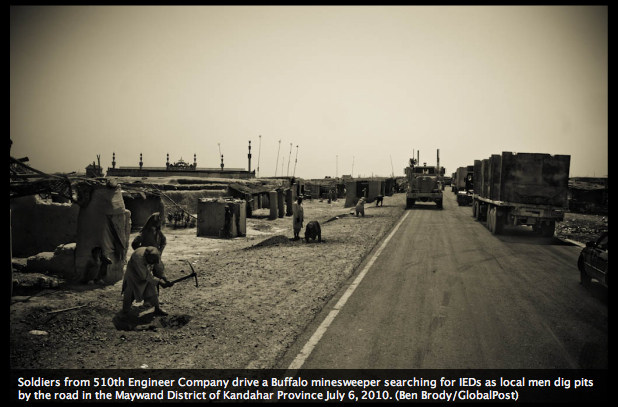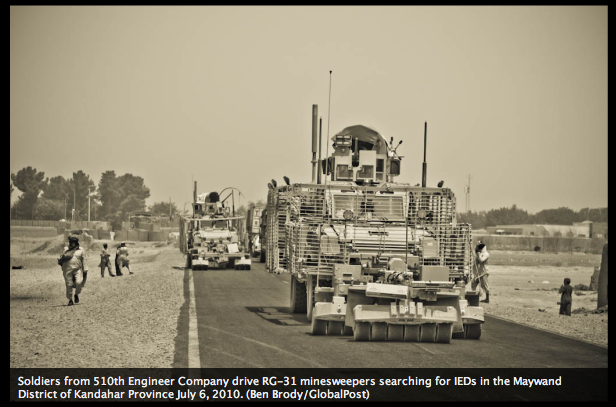

Global Post
Full Frame: Clearing the way
An embedded photographer captures the work of a US bomb clearing unit in Kandahar, Afghanistan.
By Ben Brody
Published: July 26, 2010 06:17 ET in Full Frame
Full Frame features photo essays and conversations with photographers in the field.
In order for 30,000 U.S. troops to move into Kandahar this summer, the roads have to stay open. Although soldiers can and do fly into their forward operating bases, the vast amounts of supplies they require move in vulnerable convoys of semis on the province's only highway.
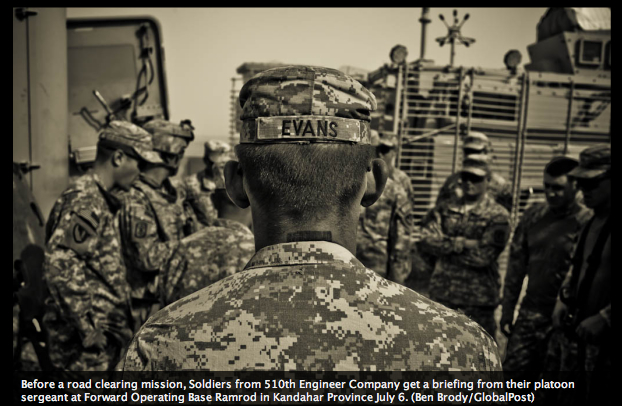
Freedom of movement is a major priority of the military command here and lumbering patrols of route clearance teams ply the highway looking for bombs, hoping to find them before they explode.
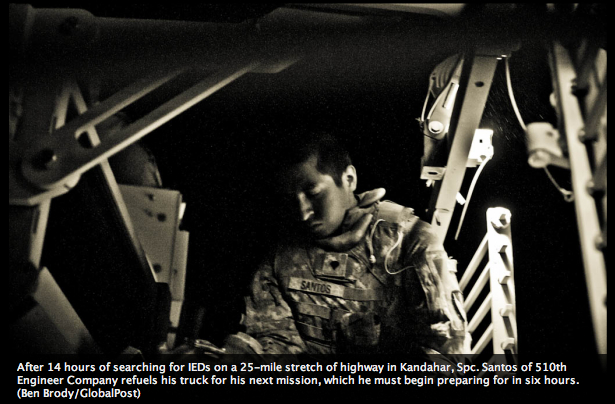
Soldiers from 510th Engineer Company based at Foward Operating Base Ramrod run daily route clearance missions, working grueling hours inspecting the roads at a snail's pace. A typical 25-mile drive takes the soldiers about 12 hours, and every IED they find usually adds about two hours to that.
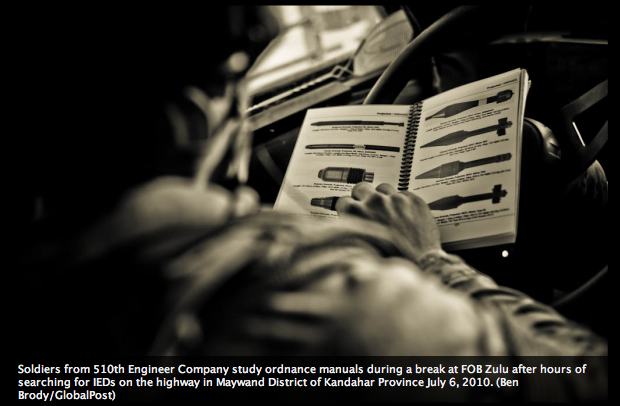
"We've had several missions run over 24 hours and one lasted about 40," said Capt. James Pence, commander of the 510th. "You can't rush it, especially when they're digging in bombs right behind you as you drive past."
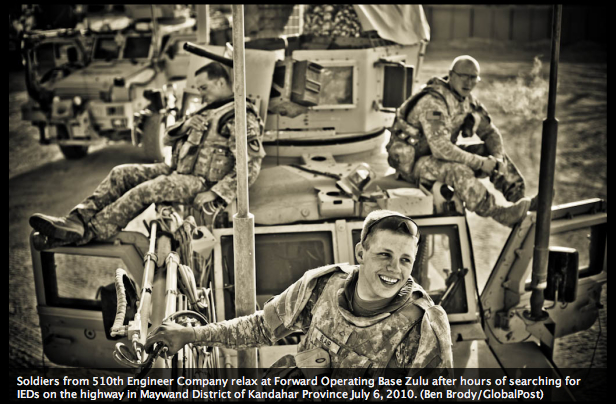
Roadside bombs remain the number one killer of U.S. troops in Afghanistan and although their construction is relatively crude compared with those seen in Iraq, the sheer size of some of the bombs have thrown 30-ton vehicles high in the air. While Iraq is awash in military-grade munitions and sophisticated initiation devices, Afghan fighters generally pack homemade explosives into ubiquitous yellow plastic jugs and wire them to pressure plates that detonate on contact.
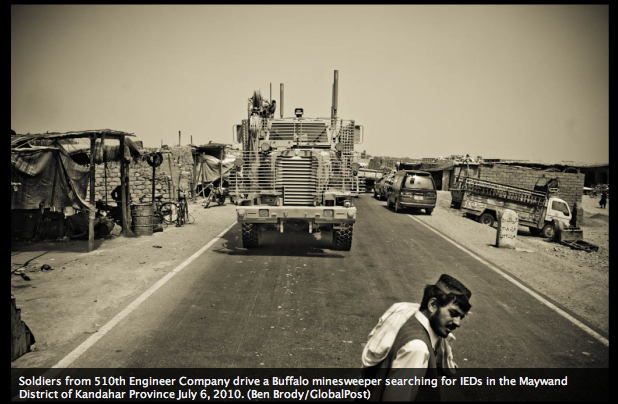
One innovation the Taliban have engineered is to place metal bowls over their pressure plates in an attempt to prevent lightweight civilian vehicles from tripping the mine. However, locals often pile incredible amounts of cargo into their trucks, so there have been several cases of civilian vehicles setting off the "crush bowl" IEDs.
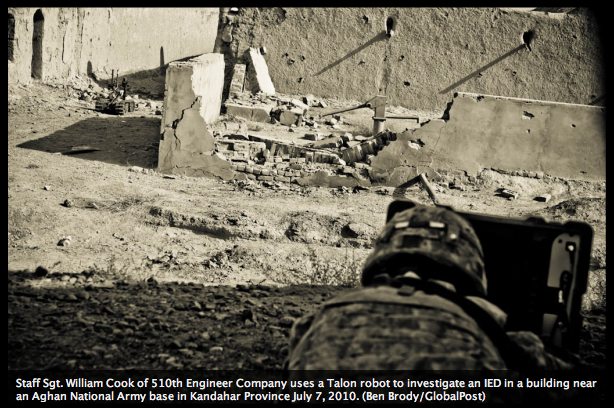
"We adjust our techniques and the Taliban adjust theirs — it's a continuous game of chess," said Lt. Col. Peter Andrysiak, commander of 20th Engineer Battalion, which is the 510th's higher headquarters. "General (Nick) Carter wants freedom of movement on the highway, which will keep commerce flowing, government centers open and phones working."
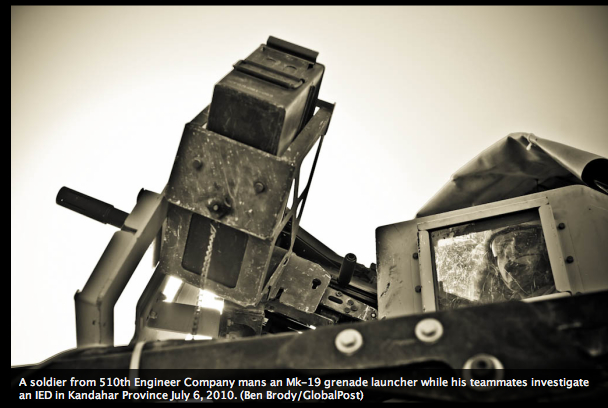
During a route clearance patrol July 6, the 1st Platoon of the 510th came upon a group of Afghan soldiers guarding a building that had been rigged with a small IED. After the Afghans went into the building and marked the IED with a chem light, Staff Sgt. William Cook dragged the Talon, a small robot that looks Wall-E, down toward the building and maneuvered it up to the bomb.
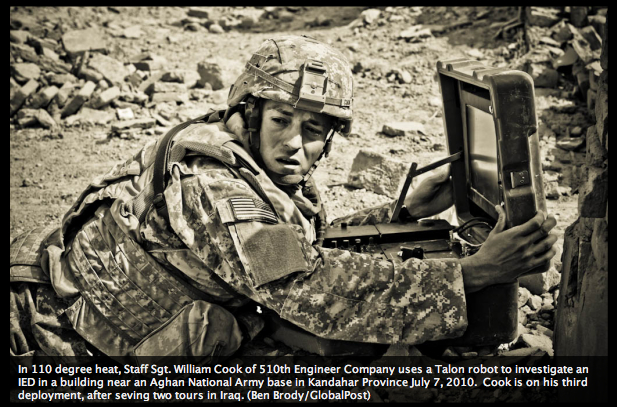
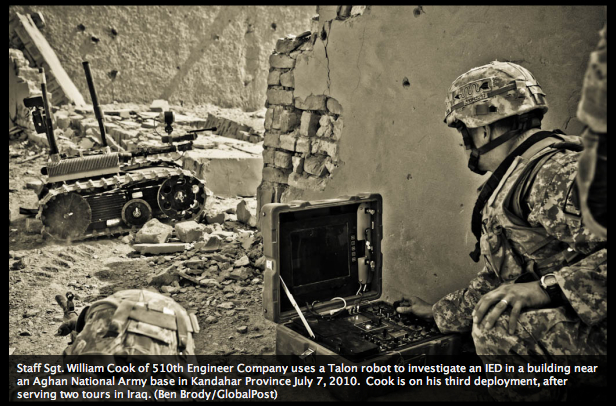
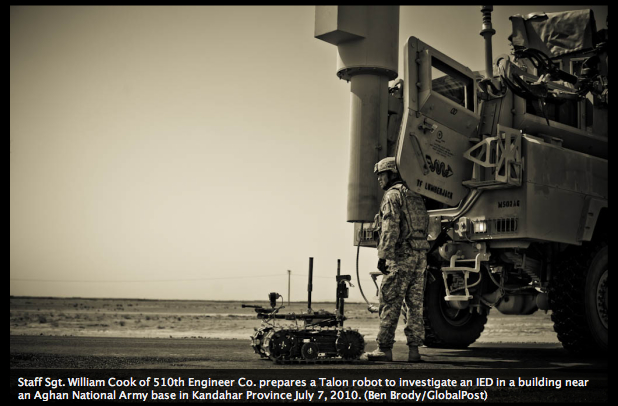
Cook is qualified to "BIP" small IEDs, an Army acronym for blow in place. However, just before he was able to detonate the device, a group of highly-trained EOD soldiers arrived and took over the BIP as Cook and his soldiers drove away to look for more.
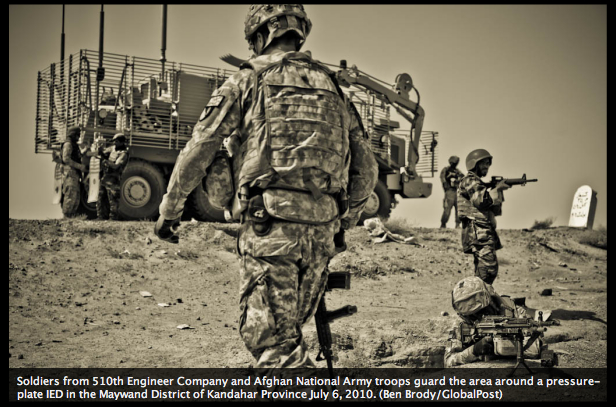
On a 14-hour mission, 1st Platoon found and detonated three IEDs. When the patrol returned to base late at night, they hurried to get a bite to eat before bed, as they had to be up in five hours to do it all over again.
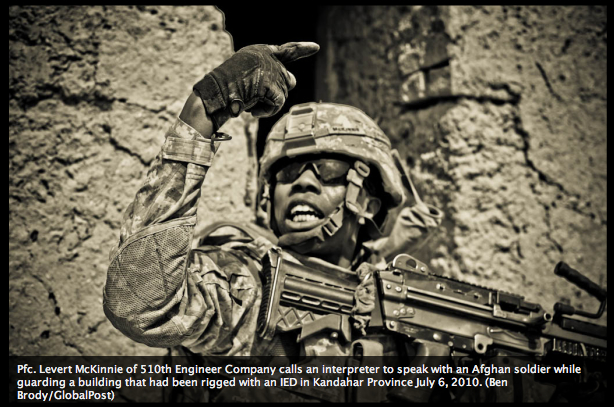
Ben Brody served two tours in Iraq for the U.S. military as a combat photographer before joining the GlobalPost team in Kandahar. Brody's photographs have appeared in the New York Times, Washington Post, Atlanta Journal-Constitution and others. Brody plans to stay in Afghanistan from early July through September.
